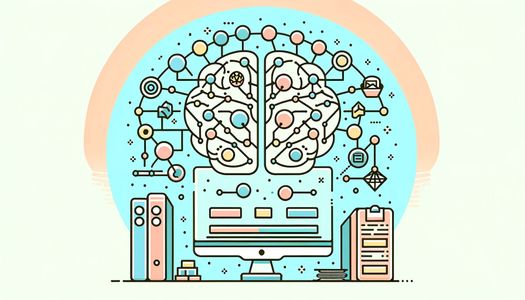The Strategic Advantage of Integrating LLMs into Enterprise Knowledge Management
 Karen Hill
16 Oct, 2025
7 mins read
28
Karen Hill
16 Oct, 2025
7 mins read
28

Organizations are becoming more and more defined by how well they handle and use their knowledge assets in today's business world. Every conversation, document, and project result is important, but a lot of it is lost or hard to find without the right tools. When you combine the power of large language models (LLMs) with standard information management frameworks, you get enterprise LLM knowledge management. This makes your organization's brain smarter and more flexible.
The Shift Toward AI-Driven Knowledge Systems
Traditional knowledge management relied heavily on human input and static databases. While these systems served as useful repositories, they often struggled with scalability and context awareness. As companies generate exponentially more unstructured dataâ€â€from emails and reports to customer chats and meeting transcriptsâ€â€retrieving the right information has become a serious challenge.
Large language models are changing this equation. Trained on vast amounts of text and fine-tuned for enterprise environments, LLMs can understand, categorize, and retrieve information in a way that feels almost human. They don’t just search for keywords; they interpret intent, infer context, and deliver insights that help employees make better decisions faster. This marks a major leap forward in knowledge accessibility and collaboration across departments.
Turning Information into Intelligence
Integrating LLMs into enterprise knowledge management enables organizations to move from simply storing data to generating real intelligence. These AI models can analyze complex internal documentation, identify recurring themes, summarize lengthy reports, and even suggest relevant materials based on user queries.
For example, a sales manager could ask the system for insights into client trends, and the LLM would pull not only relevant sales reports but also highlight recurring issues discussed in meeting transcripts or customer emails. This kind of interconnected intelligence allows for more agile strategy formulation and resource allocation. Instead of wasting hours searching through siloed systems, teams gain immediate access to the most relevant and reliable information.
Enhancing Collaboration and Decision-Making
One of the greatest strengths of enterprise LLM knowledge management is its ability to break down departmental silos. Employees in marketing, engineering, or customer support can all access the same pool of organized information through natural language queries. The system learns from usage patterns, refining its responses and improving accuracy over time.
This unified access fosters stronger collaboration and eliminates duplication of work. When everyone can rely on a single intelligent knowledge base, organizations experience fewer misunderstandings and faster decision cycles. LLM integration also helps leaders stay informed by automatically generating concise summaries of ongoing projects, reducing the cognitive load of managing large teams or multiple operations.
Security, Compliance, and Customization
Enterprise applications of LLMs must address critical issues of data privacy and compliance. Modern AI-driven platforms can be deployed securely within an organization’s infrastructure, ensuring that sensitive data never leaves company systems. They can also be fine-tuned on proprietary data, aligning the model’s behavior and tone with the organization’s culture, ethics, and compliance standards.
Furthermore, the flexibility of enterprise-level LLMs allows for industry-specific adaptations. A legal firm can train its system to interpret case precedents, while a healthcare organization might tailor it to summarize patient records in compliance with regulations. These specialized configurations transform LLMs into strategic assets rather than generic tools.
Preparing for the Future of Intelligent Enterprises
The integration of LLMs into knowledge management is more than a trendâ€â€it represents the next phase of digital transformation. As organizations continue to adopt AI tools, the ones that leverage enterprise LLM knowledge management will gain a competitive edge through faster learning cycles, more informed strategies, and higher workforce productivity.
In the coming years, this integration will likely evolve into even more sophisticated forms, combining multimodal AI capabilities such as voice, image, and document understanding. Enterprises that start investing in this transformation today will be the ones shaping the knowledge ecosystems of tomorrow.
Final Thoughts
Integrating large language models into enterprise knowledge systems is not just about technologyâ€â€it’s about empowering people with knowledge that works for them. By adopting intelligent, secure, and context-aware solutions, businesses can turn their collective data into actionable insight, ensuring that every decision, innovation, and collaboration builds on a foundation of shared intelligence.
Written By:
Karen Hill



Hotels at your convenience
Now choose your stay according to your preference. From finding a place for your dream destination or a mere weekend getaway to business accommodations or brief stay, we have got you covered. Explore hotels as per your mood.





